FUE Hair Transplant
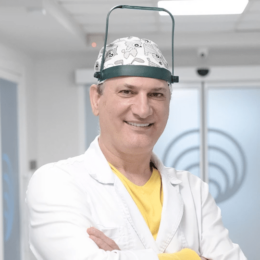
Medically reviewed by
Yetkin Bayer
Hair Transplant Surgeon, Certified in Facial Plastic Surgery
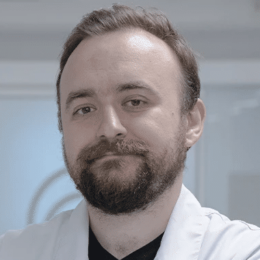
Written by
Noyan Süalp
- Updated on 7 October 2024
What is FUE Hair Transplant?
Follicular unit extraction (FUE) also known as follicular transfer (FT), one of the primary methods in hair transplantation, was developed in the early 2000s replacing the previous technique, FUT (follicular unit transplantation). The FUE (Follicular Unit Extraction) is a cosmetic hair transplant microsurgery procedure.
Involves the extraction of single follicular units from usually the nape, the donor area, to be inserted in the open micro-channels in the receiving area. (the area with baldness).
The FUE (Follicular Unit Extraction) is a cosmetic hair transplant microsurgery procedure with minimal intervention, faster healing process, and scars absence
And so far has become the gold standard for hair transplantation, preferred by hair transplant doctors. And the best solution to all the hair loss problems.
Operation Details
-
5 Hours
Operation Time
-
Local
Anesthesia
-
Up to 600
Maximum grafts in one sessions
-
2 Weeks
1st Checkup
-
2-3 Days
Average length of stay in Turkey
-
60 Days
New Hair Growth
-
30 Days
Donor Healing Time
-
1 Day
Return to Routine
-
90 Day
Healing Time
-
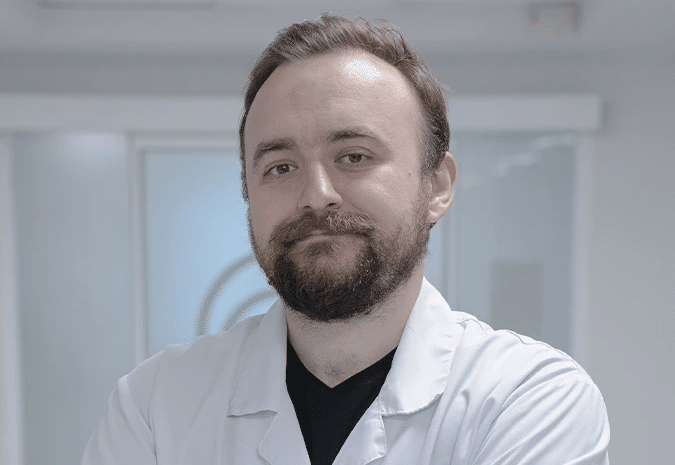
Medical Doctor
Noyan Süalp, MD
Let's Talk
Still unsure? Feeling overwhelmed? Talking to a real doctor can give you the guidance and reassurance needed. You don’t have to do it alone. Let’s find the right doctor together.
Sapphire FUE vs. Classic FUE
In the FUE method, the use of sapphire tips, which are a lot sharper and smoother compared to the classical tips, for channel opening step has been groundbreaking for hair transplantation.
The use of tips made from sapphire, a valuable mineral, in FUE allows openning smoother channels in the implant area which results minimal formation of scabs, thus fastens the healing process. For this reason, while FUE performed with sapphire tips and not metal slits is not a new technique; it is an innovation implementing a new process within the FUE method.
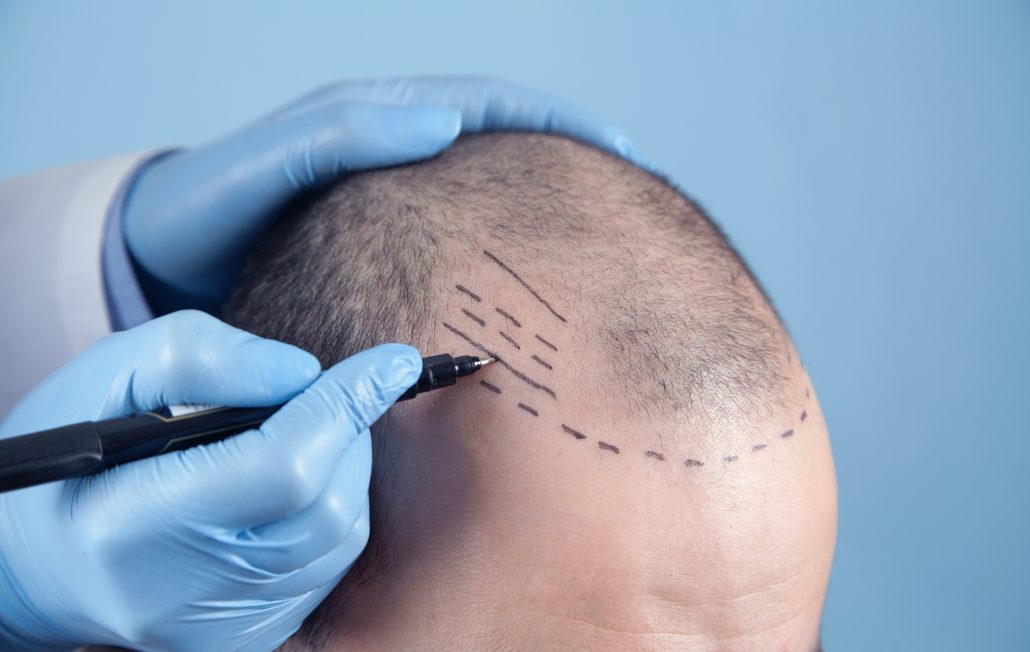
Service Details
- VIP Transfer
- Hospital stay until discharge
- 24/7 Monitoring in hospital
- Translator
- You can bring your companion
- Dietitian consultation
- Medical aesthetic consultation
- All meal for you and company
Operation Procedure

Complete the online form to provide your basic information and hair loss details.

Schedule a virtual consultation with our specialists to discuss your treatment options and confirm your appointment.

Undergo necessary medical tests at the clinic to ensure you are fit for the hair transplant procedure.
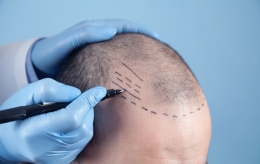
The hair transplant operation involves extracting hair follicles from the donor area and implanting
Who is a Good Candidate for FUE Hair Transplant?
Analyzing the patient’s medical situations, the history of hair loss, the patient’s needs and wishes will be just as important as previous analysis, to ensure a successful hair transplant.
Operating a patient unsuitable for hair transplantation can be dangerous. This will not only lead to producer failure but also put the patient at risk.
The main prerequisites for an ideal FUE candidate are :
The cause of hair loss: The patient who undergoes FUE hair transplant must not suffer from a temporary hair loss caused by (chemotherapy, stress, side effects of medicines, etc ) and only in case of permanent hair loss, the patient must be in good condition.
Mainly the types of permanent hair loss are male, androgenetic alopecia, trauma, and burns.
Hair loss level : Before carrying out an FUE transplant, the doctor must make sure that the hair loss is in an advanced state and not in progress. At some point in life, androgenetic alopecia tends to slow down or stop; this is the right time to perform the FUE transplant. if the intervention was performed before this period, the progressed alopecia would require a second intervention in the future.
The donor area : This area is the upper area of the neck (nape). This area is genetically not predisposed to hair loss. Meaning that the hair taken from this area and transplanted will not fall out. And this why The doctor must carefully analyze the donor area prior to FUE hair transplant to ensure, the donor area suitable and dense enough to undergo FUE transplant,
And removing hair from an unsuitable donor area will create problems for future intervention.
Health status of the candidate:
Analyzing the health status of the patient is extremely important, which is why it’s the first procedure the patient undergoes & an FUE hair transplant. there are some pathologies that do not allow patients to undergo FUE, the main ones are
- HIV and AIDS and other blood diseases
- Pregnancy
- Hepatitis B and C
- Epilepsy
- In the event of disorders related to blood pressure or diabetes, the doctor will perform the transplant and the specialist doctor of the patient will have to be involved in strategies for a suitable hair transplant.
Analyzing the Reception Area and Donor Area
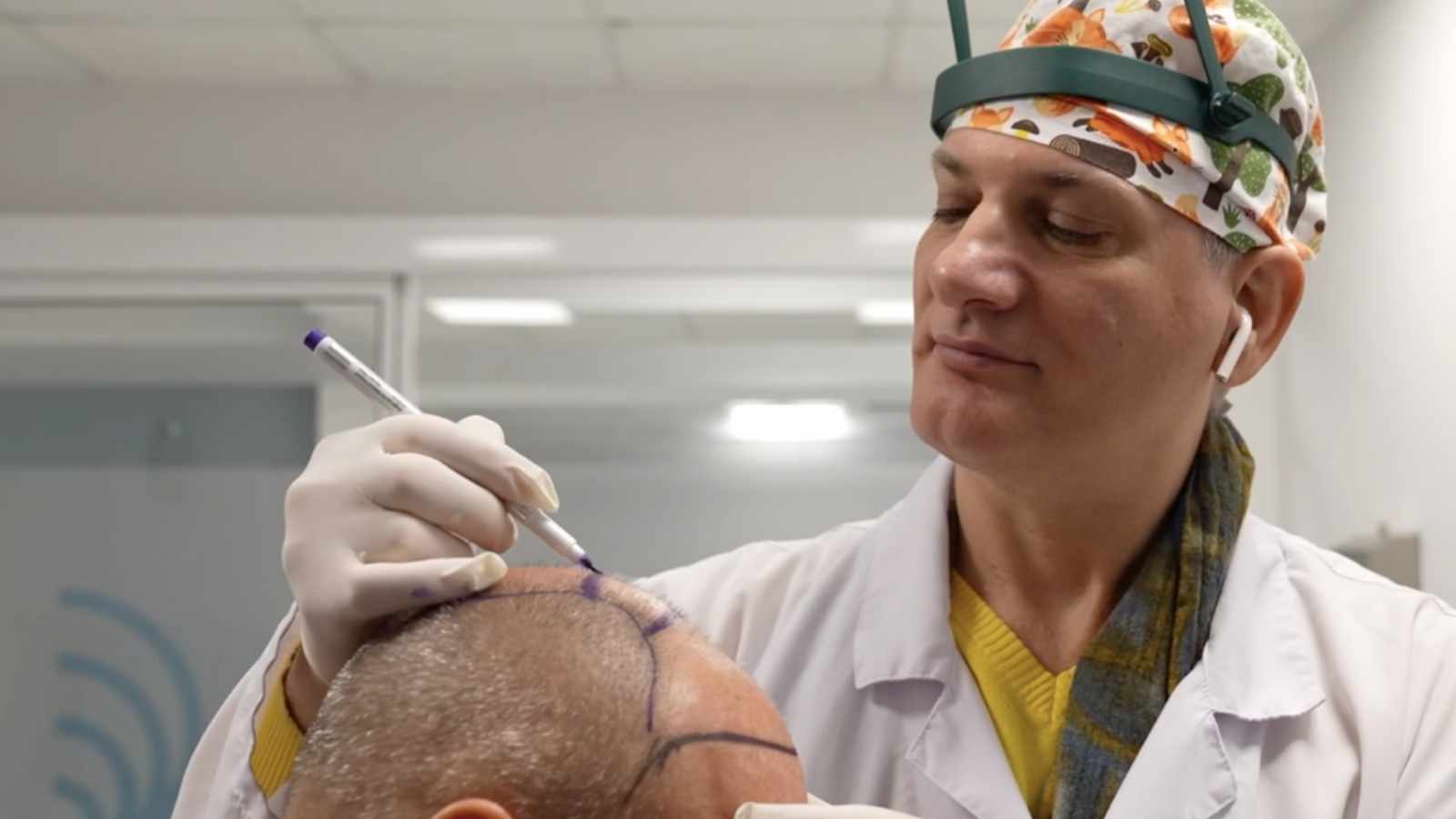
Each hair transplant patient has a unique situation that must be carefully analyzed by the doctor, and it would start by analyzing the patient’s medical situation first, moving along to analyzing how many follicular units to extract, how to position them, and how to draw the hairline. an expert doctor will know how to decide that.
Needing an expert doctor factor due to each patient has a different donor area and different receiving area: the amount of hair, the color, the duplicity, and the texture.
The analyzing producer not only affects the number of units taken but also the final result of the FUE hair transplantation, a correct analysis of the hair transplant area is one of the important phases.
This is also the right time for the patients to express any doubts with hairline drawing to the doctor, usually, as a hair transplant’s doctor proceeds to draw the patient’s hairline, it’s based on the aesthetic measurement and also a natural look, post hair transplant.
FUE Hair Transplant Anesthesia
The FUE is a non-invasive operation that requires local anesthesia, and the usage of general anesthesia is considered unnecessary and might lead to risks during the operation, and post hair transplant.
The use of local anesthesia allows the patient to remain awake during the hair transplant, but pain-free and the whole area is completely insensitive.
Local anesthesia administered in FUE through some injections into the scalp
And It requires 5 minutes with 4-8 injections.
The administration of anesthesia and the waiting for the effect would approximately take about 15-30 minutes.
If a patient suffers from a fear of needles or has a low pain threshold it would be possible to resort to it with the use of the jet, injector or sedation.
Do I have to receive anesthesia?
There are 3 types of anesthesia: local, regional and general.
In a hair transplant, the doctor administers local anesthesia and slight sedation used. This is enough for the patient to feel no pain and be at ease, while still conscious through the procedure, even able to consume food and be provided with other entertainment activities.
Though hair transplant involves minimal intervention, it is necessary to numb the scalp area, as quiet as big the area will be operated on, anesthesia is responsible for making hair transplant producer painless, and comforting for the patient
In conclusion, yes, you might have to receive local anesthesia. A lot of our patients are concerned that they may experience pain and discomfort during the surgery. However, you can rest assured that the doctors will try to make your experience in the clinic worry-free and comfortable.
Why Do Patients Choose Turkey for FUE Hair Transplant?
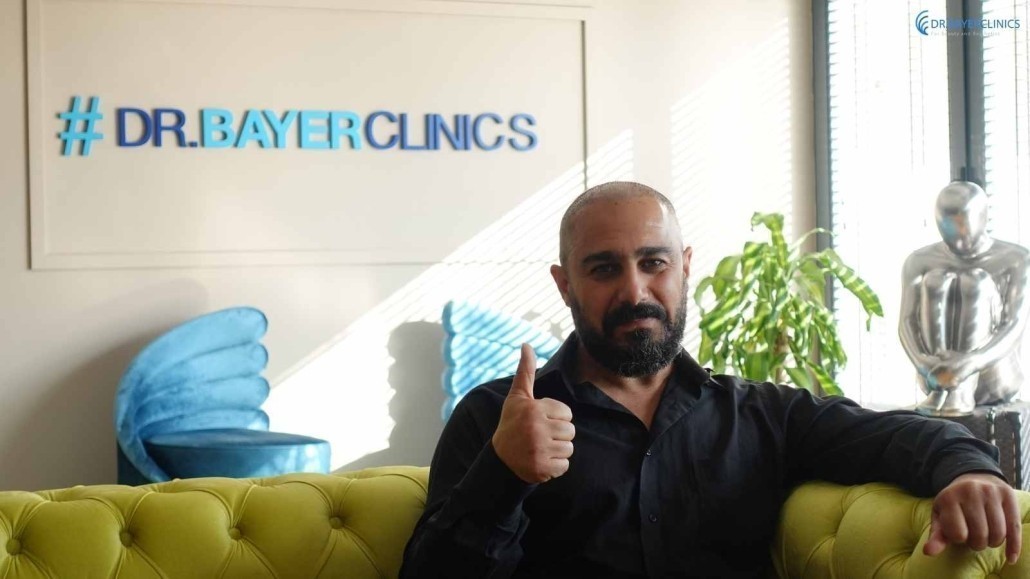
Turkey, located at the intersection of Asia and Europe, is ideal for potential FUE hair transplant patients from all over the world, and there are explanations for it being the most popular location for FUE hair transplant operations.
The major reason for patients to choose Turkey for their FUE transplants is due to the cheapness of hair transplant expenses. These cheap prices can be attributed to the fairly low cost of life and employment. In addition, Turkey has put a lot of effort into modernizing its medical system, ensuring that its healthcare centers meet or even exceed global norms. So, once you select Turkey as your FUE hair transplant location, you’ll have access to the most cutting-edge FUE technology and methods.
Lastly, the surgeons in Turkey are educated in the best way and have worked with international patients for years; therefore, they will understand what you need completely, and your process will be safe.
Fue Hair Transplant- Recovery Timeline
The recovery period begins shortly following the operation. Apart from FUT, this technique does not require the removal of skin slices and only gathers follicles from the donor site. As a result, you will be able to manage and go to work right away following the hair transplant.
The biggest worry, undoubtedly, is how long it might take for your hair to restore and when it will look healthy and normal once more. It is important to keep in mind that reducing harm or allergic reaction in this part of the body is critical during the recovery process. Every individual is unique, and there will always be some difference in new hair development. However, here is a standard overview of the outcomes you can anticipate at multiple levels.
Recovery Timeline After surgery:
- The pain, inflammation, bruising, and blister should disappear by the end of the first week, providing you with a classic shaved haircut on the head.
- The recently transplanted hair falls out 2 to 3 weeks following the FUE hair transplant. This is a usual procedure that you should not be terrified about. It is a routine component of the hair growth cycle. Even when there is baldness, the follicle continues to progress and goes back to the development stage in a matter of weeks.
- The person with FUE probably looks very similar to his or her situation 2 to 3 months ago, which is also common. You will persist in carefully applying all following treatment guidelines and schedule follow-up appointments with your surgeon.
- After 4 months, you should notice hair growth from the implanted hair shaft. Even so, because restorative time and progress can differ, new hair development occurs sooner in certain patients. At this point, fresh regrowth can be fragile and slim, indicating that FUE will not produce long-term outcomes.
- Through the ninth month, your hair will be much denser and longer, allowing you to model it anyway you want. As is advisable, schedule a follow-up meeting with the surgeon.
- The transplant operation will be almost finished in terms of development, depth, and volume after a year of surgical procedure. At this moment, the majority of your hair follicles can produce healthy hair.
What to expect after a FUE Hair Transplant ?
After a FUE hair transplant, you need to dedicate yourself to take care of your scalp and hair. Your surgeon and assistants will go over all of it with you all in greater depth, and here are several aftercare guidelines that are likely to be given to you:
- For at least three days, refrain from washing your hair or taking a bath.
- When you begin washing your head, use soft, unflavored skincare products for several weeks.
- Take a few days off job to aid in the recovery process.
- For at least three weeks, don’t brush or scrub your new hair.
- Use caps, hoodies, or other head coverings only if your doctor has given you the all-clear.
- For at least a week, refrain from engaging in any intense exercise.
All inclusive FUE Hair transplant Package
- Accommodation (3 nights stay in a 4-star hotel)
- VIP transfers (Private car. From the hospital to the hotel, then to the hospital, and back)
- Translator service if needed
- Painless Local Anesthesia
- MicroFUE maximum density pre-operation haircut
- PRP Treatment Medications
- Post-operative care essentials, such as shampoo, lotion, special hat, neck pillow, pain killers, aspirin, antibiotics, etc.
- PRP therapy to stimulate better hair growth.
FAQ about FUE Hair Transplant
Most patients experience minimal discomfort during the procedure due to the use of local anesthesia. Some mild soreness or swelling may occur afterward, which can be managed with prescribed medications.
The duration of the FUE procedure varies depending on the number of grafts needed, but it typically takes between 6 to 8 hours.
Initial recovery takes about 7-10 days, during which you may experience some redness, swelling, and scabbing. You can typically return to work and normal activities within a week. Full recovery and hair growth results can be seen over the next 6-12 months.
Hair growth usually begins around 3 months post-procedure, with significant improvement visible at 6 months. Full results are generally achieved between 12 to 18 months.
Yes, the transplanted hair follicles are resistant to the hormone that causes hair loss, making the results of the FUE hair transplant permanent.
The cost of an FUE hair transplant varies based on the number of grafts required and the specific needs of the patient. During your consultation, Dr. Yetkin Bayer will provide a detailed cost estimate tailored to your case.
Eligibility is determined by factors such as the extent of hair loss, availability of donor hair, hair type, and overall health. A thorough consultation with Dr. Yetkin Bayer will assess your suitability for the procedure.
To schedule a consultation, you can contact Dr. Yetkin Bayer Clinic via phone, email, or through the clinic’s website. Our team will be happy to assist you in setting up an appointment.
Before the procedure, you should:
- Avoid smoking and alcohol for at least a week.
- Refrain from taking blood-thinning medications.
- Follow any specific instructions provided by Dr. Yetkin Bayer.
Post-procedure care includes:
- Following the prescribed medication regimen.
- Avoiding strenuous activities and direct sun exposure.
- Keeping the scalp clean and following washing instructions.
- Attending follow-up appointments as scheduled.

















